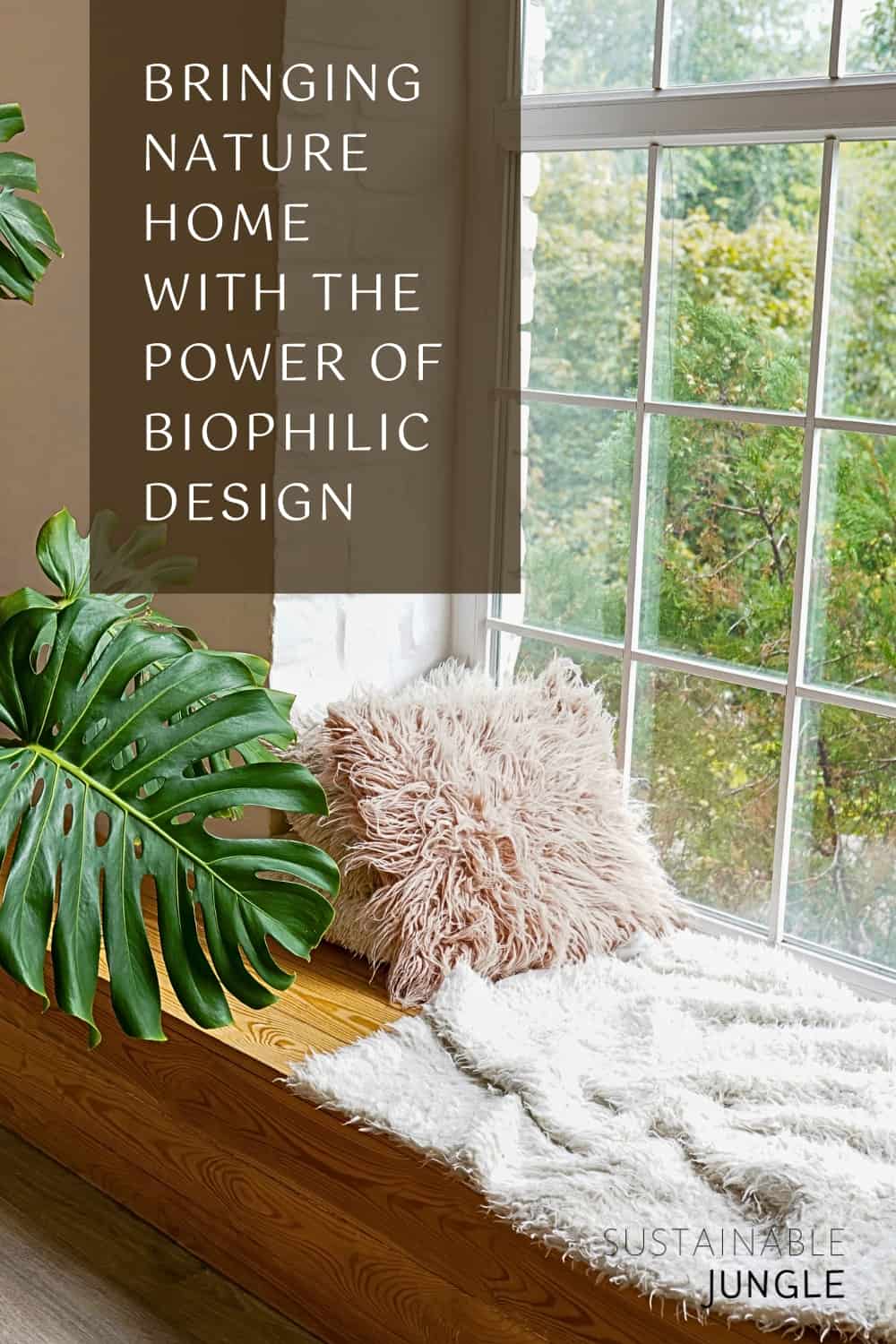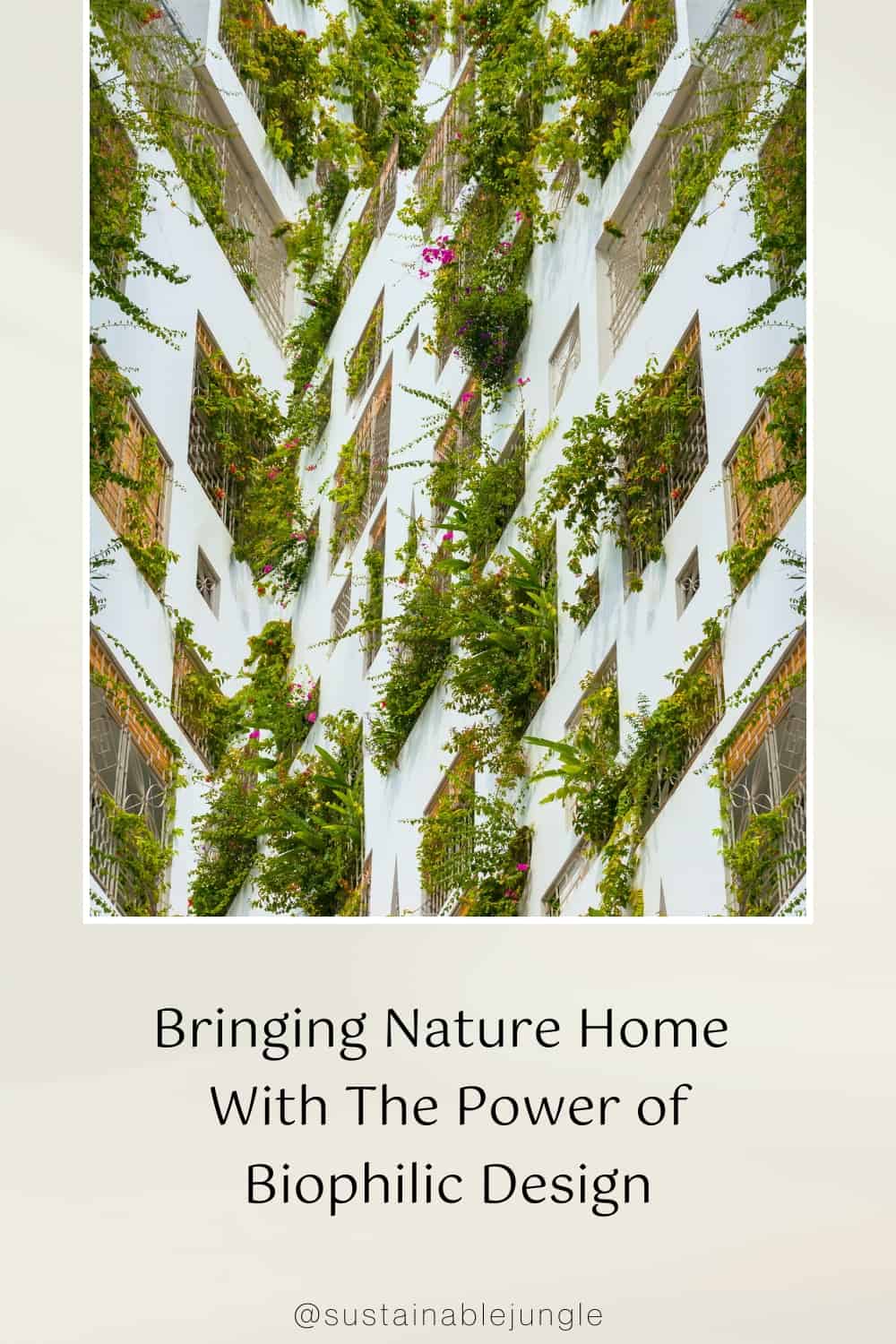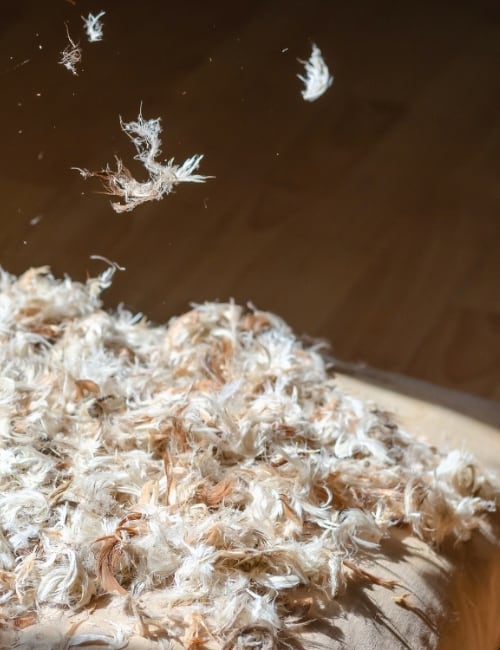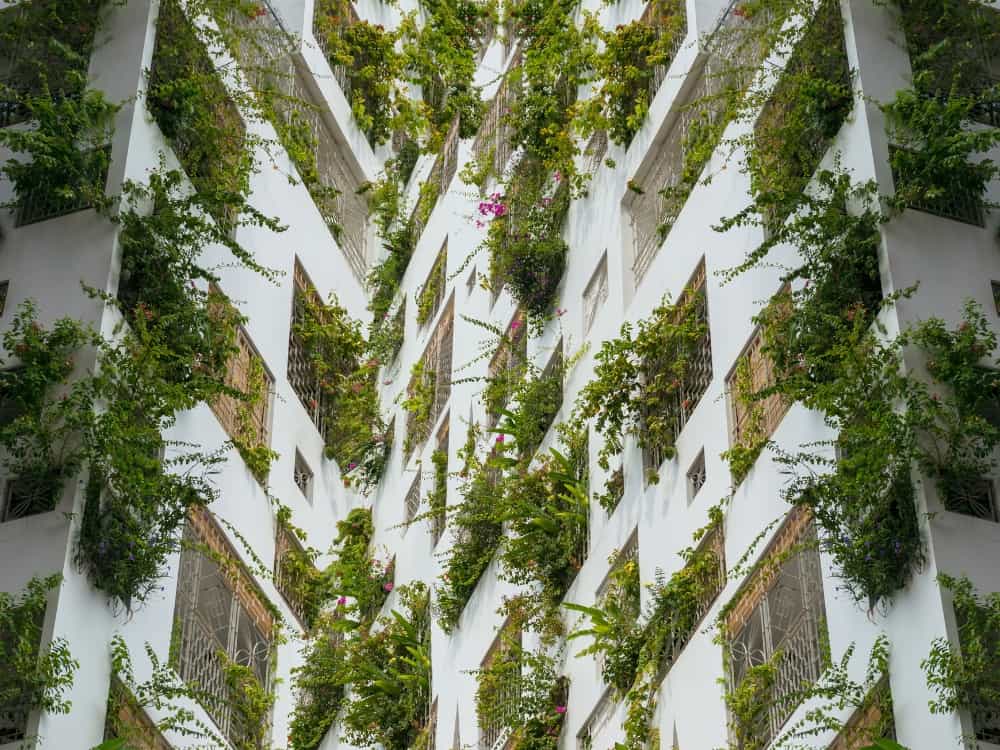
Bringing Nature Home With The Power of Biophilic Design
In a world where concrete jungles dominate our landscapes, there’s a growing movement that’s turning the tables on urban monotony and bringing a breath of fresh, leafy air to our built environments.
Biophilic design is a set of principles that can be followed to design living and working spaces that connect us with the natural world and enhance our physical, mental, and emotional well-being.
It’s about finding ways to purposefully create a connection between people and nature when designing buildings and interiors.
The biophilic design concept is underpinned by the belief (and scientific studies to back it up) that connection with the natural world benefits our health and well-being, both physically and mentally.
If you’re tired of feeling like a mere office drone or city dweller, it’s time to unlock the secrets of biophilic design and discover how to cultivate your own urban Eden.
1. What Is Biophilic Design?
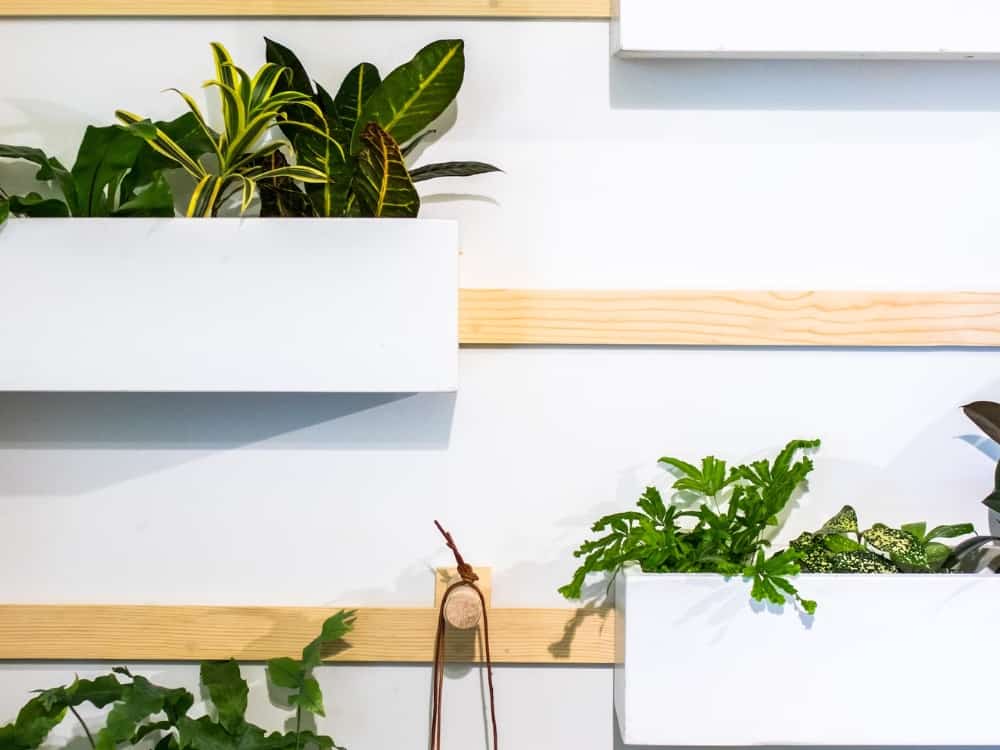
Biophilic design is based on the principle of biophilia, or the innate human tendency to seek connections and interactions with nature.
It stems from ancient Greek words literally meaning “love of nature”.
In other words, it’s a concept that suggests that humans have an instinctive bond with other living organisms and the natural world.
So what is the difference between biophilia and biophilic design?
Biophilic design takes the abstract, philosophical concept and biophilia and gives it practical, real-world application.
The biophilic design definition, then, is an approach to architecture and interior design that incorporates natural elements into the built environment. It is a design philosophy that seeks to create a connection between people and nature by incorporating natural elements and materials, natural light, and views of nature into the design of buildings and spaces.
What Are The Three Pillars Of Biophilic Design?
So other than the loose theme of biophilia, what is the concept of biophilic design based on?
It boils down to the three pillars of biophilic design—nature In The Space, Natural Analogues, and Nature Of The Space—originally defined by the Terrapin Bright Green consulting firm.
First, is Nature In The Space. This focused on our tangible connections with nature, or those we can directly feel, hear, and interact with. This can involve something as simple as natural light and plants, or be as complex as incorporating water features and animals.
Natural Analogues takes biophilic design ideas into the abstract, referring to non-living representations of nature, such as the use of natural materials, colors, shapes, and patterns.
Finally, Nature Of The Space deals with spatial design, both with regard to cultivating views of natural and expansive natural landscapes and the innate human desire to take “refuge” via small, cozy nooks.
These three pillars are then subdivided into more specific concepts suited for practical application.
What Are Elements Of Biophilic Design?
Built on these three pillars are several patterns of biophilic design that can be used to create a connection between people and nature.
At its core, there are six principles of biophilic design:
- Visual connection with nature: Incorporating views of nature into the design of buildings and spaces. This can be achieved through the use of windows, skylights, and other openings that allow natural light and views of nature into the space.
- Non-visual connection with nature: Incorporating natural sounds, textures, and scents through the use of water features, natural materials, and plants.
- Biomorphic forms and natural patterns: Incorporating natural forms and patterns through the use of curved lines, organic shapes, and patterns that mimic those found in nature.
- Natural lighting: Incorporating natural lighting can be achieved through use of skylights, windows, and other openings.
- Material connection with nature: Incorporating natural materials, such as wood and stone.
- Complexity and order: Incorporating fractals, natural patterns, and other elements that mimic those found in nature.
2. Biophilic Interior Design Vs Biophilic Architecture
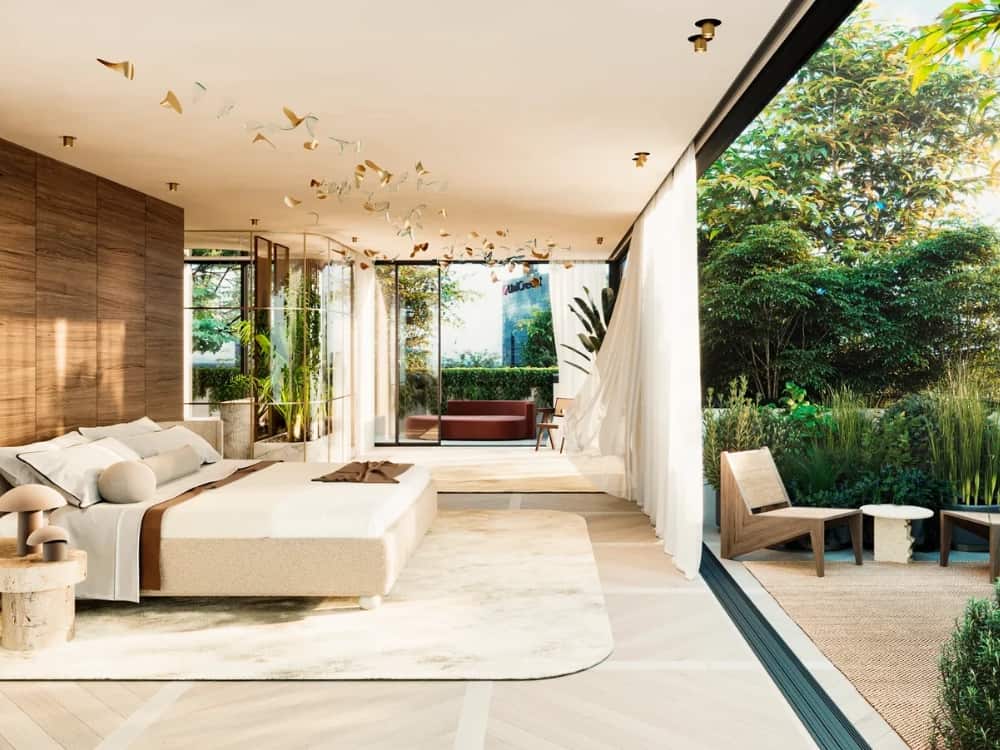
Biophilic design and biophilic architecture share a common goal: to integrate natural features into the built environment.
However, they differ in scope and focus.
In essence, biophilic design enhances interior spaces, while biophilic architecture extends this approach to the entire environment, emphasizing a more comprehensive integration with natural systems.
Examples of Biophilic Interior Design
Choosing to create a biophilic office design, for example, means taking natural elements—like plants, light, water features, and materials—to create a natural environment that mimics nature.
Some examples of biophilic interior design include:
- The Google headquarters in Mountain View, California, which has interior spaces designed to mimic natural environments such as forests and beaches.
- The Bullitt Center in Seattle, Washington, which uses natural materials such as wood and stone throughout the building and has a central atrium that allows for natural light and ventilation.
- The H&M flagship store in Stockholm, Sweden, which has an interior designed to resemble a greenhouse, with plants and natural light throughout the space.
Examples of Biophilic Design in Architecture
So what is biophilic architecture then?
Biophilic architecture—sometimes called biophilic urban design—turns micro into macro by employing the same biophilic design strategies employed in the home on a much larger structural scale.
It’s a broader approach, encompassing both interior and exterior spaces and considering how the entire built environment interacts with natural systems.
This approach involves site-specific design, eco-friendly landscaping and natural landscape integration, and sustainable building practices. Incorporating biophilic design in architecture aims to create a holistic and sustainable relationship between the building and its surroundings, emphasizing ecological balance and harmony.
Some biophilic architecture examples include:
- The Amazon Spheres in Seattle, Washington, which are three glass domes filled with over 40,000 plants from around the world.
- The Bosco Verticale in Milan, Italy, which is a pair of residential towers covered in over 900 trees and 20,000 plants.
- The California Academy of Sciences in San Francisco, California, which has a living roof covered in over 1.7 million plants and is designed to reduce the building’s energy consumption.
- Singapore’s CapitaSpring “biophilic skyscraper” is packed with thousands of plants and trees—not to mention the city’s many other natural features, like vertical urban farming allotments.
The argument for biophilic architecture and interior design alike boils down to the tremendous benefits their incroporated natural features can have for the humans who occupy the spaces, including improving mental health and well-being, increasing productivity, and reducing energy consumption.
3. Biophilic Design Benefits

Applying biophilic design principles to our living and working environments can improve both our physical and mental health.
Maximizing natural light can help balance our circadian rhythms, ventilating with fresh air makes for a healthier indoor environment, and using natural materials to decorate our homes means fewer toxins and VOCs that contribute to indoor air pollution.
Broadly speaking, what are three benefits of biophilic design?
Physical Health Benefits
One of the biggest biophilic design benefits is its positive impact on physical health.
Incorporating natural elements such as plants, water features, and natural lighting can help reduce stress, balance circadian rhythms (for which proper morning and evening light exposure is critical), reduce hypertension, lower blood pressure, and improve overall well-being.
Studies have also shown that patients exposed to biophilic hospital designs (such as those with views of nature) have a faster recovery time and require less pain medication.
Plus, since plants are a core tenant of biophilic design principles, biophilic living rooms tend to have much cleaner air quality, due to the fact that air purifying plants can drastically reduce indoor air pollution caused by VOCs and other common household toxins.
Mental Health Benefits
Biophilic design and mental health are positively correlated in numerous respects.
Exposure to nature has been shown to improve mood, reduce anxiety and depression, and increase feelings of relaxation.
Incorporating natural elements into interior spaces can help create a calming and soothing environment, which can be particularly beneficial in high-stress environments such as hospitals and offices.
Productivity Benefits
Biophilic design in the workplace (whether public or your home’s biophilic design office) can create more productive and creative working environments.
Studies have shown that employees who work in spaces with natural elements such as plants and natural lighting are more productive, have higher job satisfaction, and experience less stress.
Additionally, incorporating natural elements into office spaces can help stimulate creativity and innovation, leading to more successful and innovative ideas.
4. Biophilic Design & Sustainability
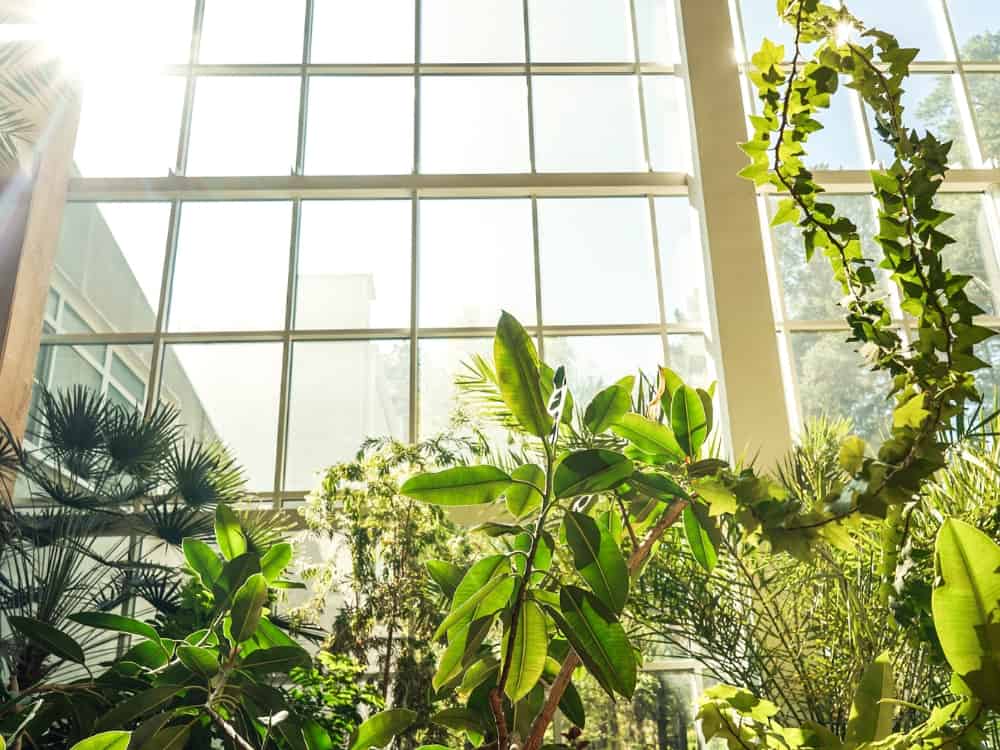
In addition to the benefits to human health and well-being, biophilic design and sustainability are also interlinked.
Sustainable materials are a cornerstone of biophilic design.
Designers often opt for eco-friendly, renewable, and locally sourced materials, minimizing the environmental impact of construction. Furthermore, the use of reclaimed and recycled materials aligns with sustainability principles, reducing waste and conserving resources.
Biophilic design strategies often consider the longevity and resilience of structures. By selecting durable materials and integrating green infrastructure like green roofs and living walls, buildings become more resilient to environmental stressors such as extreme weather events and climate change.
This longevity reduces the need for frequent renovations and replacements, further conserving resources.
By using natural materials and increasing the number of CO2 consuming plants in the world,it can help us reduce our impact on the planet, too.
Not to mention the fact that increasing things like natural light and ventilation thereby reduce the need for artificial lighting and mechanical climate control systems. In other words, it’s an excellent way to conserve energy at home.
Beyond the building’s immediate surroundings, biophilic design can contribute to the preservation and support of local ecosystems. Landscaping with native plants and creating habitats for wildlife can help increase biodiversity in urban areas.
5. Easy Ways To Create A Biophilic Home Design
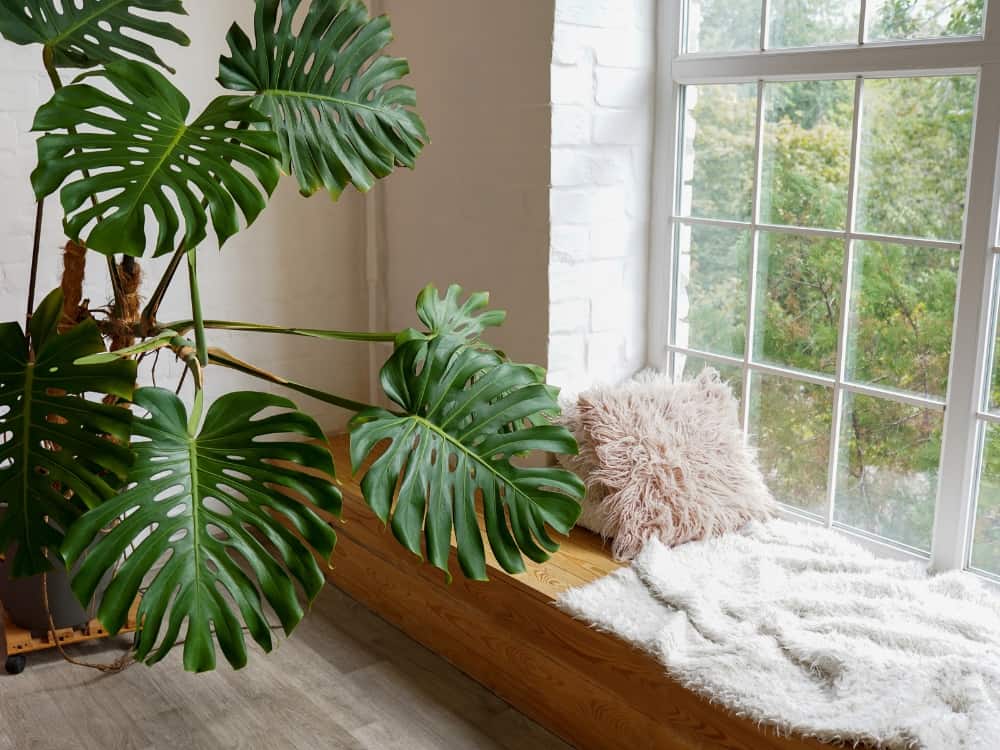
Wondering how to incorporate biophilic design into your home?
Sure, you may have an apartment garden or maybe some home growing kits to green up your space, but if you’re serious about greening up your living space, it’s easy to take these concepts to the next level by looking at some simple biophilic design examples.
So what is an example of a biophilic design you can incorporate into your home today?
We’ll give you seven.
1. Plants, Plants, & More Plants
Create a veritable indoor jungle by incorporating a house full of plants into your sustainable interior design.
Plants not only add a touch of greenery to our living spaces but also help to purify the air we breathe. Choose plants that are easy to care for and suit our home’s lighting conditions.
2. Optimize Natural Light & Views
Maximize natural light in your home by choosing light-colored curtains or blinds that allow sunlight to filter through.
You can also position your furniture to take both advantage of the natural light and maximize views to natural landscapes by positioning to face windows with a view.
3. Increase Natural Ventilation
Open windows and doors to let fresh air flow into our homes.
This not only helps to improve air quality and increase natural light, but also creates a connection to the outdoors.
4. Prioritize Natural Fabrics & Materials
Fill your home with natural, sustainable fabrics and materials such as cotton (ideally organic cotton if you’re looking for the healthiest choice), linen, wool, and hemp fabric.
When shopping for new sustainable furniture, look especially at raw wood furniture.
These materials not only add texture and warmth but also connect us to nature.
5. Use Natural Flooring & Rugs
Use natural flooring and non-toxic rugs such as hardwood, bamboo, or jute to add texture and warmth to our living spaces.
These natural materials also tend to be more durable and easy to maintain.
6. Decorate With Natural Shapes & Objects
Nature is the world’s greatest sustainable home decor brand, so use her expertise to fill your space with cute curios like seashells, rocks, and organic-shaped decor.
Have some neat fallen branches in your yard?
Try your hand at some eco-friendly craft projects, like turning them into a holder for your sustainable jewelry or hanging photographs.
7. Maximize Outdoor Space Use
Not everyone is fortunate enough to have a big backyard homestead, but that doesn’t mean we can’t make the best of the outdoor spaces we do have access to.
Whether it’s a small fenced backyard or just a balcony, commit to spending more time there.For example, invest in some sustainable outdoor furniture and curate a cute outdoor seating area.
Did you know we Have a Newsletter?
We cover the latest in sustainable living, fashion, zero waste, beauty, travel, finance and more…
Final Thoughts On Biophilic Design Meaning
Going green isn’t just about being eco-conscious.
In its most literal sense, it’s about living in harmony with nature and bringing the great outdoors into the spaces we call home.
By forging connections with nature and the natural world, the benefits of biophilic design can help foster not only a happier, healthier home, but a world at large.
With biophilia as our guide, we can transform our concrete jungles into thriving urban ecosystems, one leafy innovation at a time.
It’s your turn to help grow the movement by sharing this article to help someone reconnect with their natural environment.
After all, the grass is definitely greener where you let it in.
Pin these:
